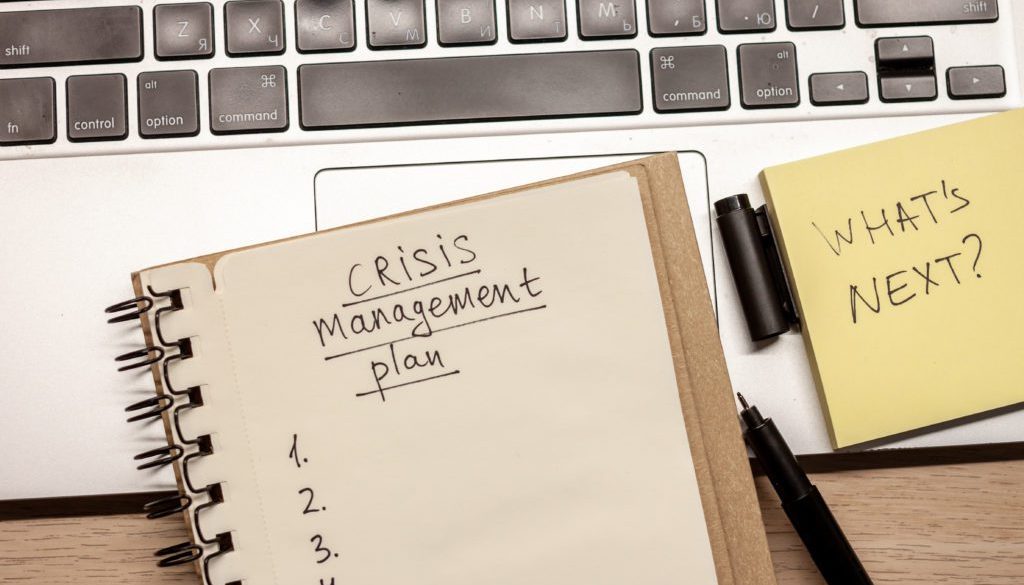Key Crisis Management Strategies and Tools
A crisis can happen at any time, and the results can be devastating, especially if the corporation, school, government body or healthcare institution is unprepared. Traditional crisis management strategies primarily focused on natural disasters, such as severe weather, fires and earthquakes. In the modern world, however, there are many other crisis scenarios that administrators and incident managers must prepare for: global disease outbreaks, cyberattacks, supply chain disruptions, power and IT outages, operational accidents and active shooter events.
The consequences of a crisis can be severe and varied. For example, natural disasters can cause costly damage to facilities and infrastructure; according to the National Centers for Environmental Information, the total cost of weather and climate disasters in the U.S. since 1980 is $2.275 trillion. Disease outbreaks can also be devastating. The coronavirus pandemic affected supply chains and the global economy so significantly that it may take years to recover.
Incidents of violence take a significant toll on individuals and the community at large, both physically and psychologically. Individuals may experience many things during and following a crisis: emotional distress, physical injuries and psychological anguish. There is even evidence suggesting that active shooter drills have a significantly negative impact on the mental health of K-12 students.
Clearly, crisis situations cannot be ignored. Employers, government officials, school administrators and healthcare institutions must develop comprehensive crisis management strategies. These plans must go beyond simply making a list of steps to take during an emergency event. To be truly effective, a crisis management strategy must include steps to mitigate and prevent crises (when possible) and to recover quickly and fully.
The four stages of a crisis
A crisis typically has four defined states: pre-crisis, crisis, response, and post-crisis. Some sources define up to six crisis stages: dividing the pre-crisis stage in two (mitigation and preparation) and/or separating the post-crisis stage into two parts (recovery and learning). Despite these nuanced differences, the general point remains: crises (and crisis management) have discrete parts, and a comprehensive strategy must address each of them.
Pre-crisis phase
This first crisis stage defines the time before a disaster or emergency event occurs. For some types of crises (such as a cyberattack), the pre-crisis phase may seem like a normal day with no warning signs of the impending event. In other cases, there may be warning signs during the pre-crisis stage. For example, meteorologists typically know when a hurricane is coming and can warn against it. In some cases, an active shooter displays psychological and/or behavioral warning signs before initiating their attack.
The pre-crisis stage is the time when leaders, emergency responders and administrators can prepare for the crisis. Pre-crisis tasks typically involve both mitigation and preparedness.
Crisis phase
Also known as the acute phase, this is the time when the crisis becomes apparent. At this point, there is no way to prevent the event; it will happen. As such, incident managers and administrators must focus on three tasks during this phase:
- Assess: Gain as much information as possible about the situation. What is the threat/disaster/emergency? Who is at risk? What type of response is required?
- Activate: Based on the answers to the assessment questions, the next step is to activate the appropriate response plan.
- Alert: While some parts of a response plan may drastically differ based on the situation (responding to a cyberattack vs. a violent physical attack), other aspects are universal. In any crisis situation, incident managers must have a reliable plan and mechanism for informing affected individuals and instructing them on how to proceed.
In any crisis, emergency communication is essential. As the Federal Emergency Management Agency (FEMA) notes, communication is critical during an incident. “Well-conceived and effectively delivered emergency messages can help ensure public safety, protect property, facilitate response efforts, elicit cooperation, instill public confidence, and help families reunite.”
To be effective in the modern world, an emergency notification system must enable administrators to communicate with targeted populations quickly via multiple avenues. Ideally, corporate communications tools should integrate with existing alarms and notification systems.
Response phase
This phase starts when incident administrators choose a response plan and deploy resources to address the threat. The length of time of this phase can vary widely. For example, this stage may last a few hours during an active shooter event or a few days during a natural disaster. In other cases, the response phase may be much longer; many organizations are still responding to the COVID-19 pandemic more than two years after it began.
Post-crisis phase
This phase involves transitioning out of crisis management and back into normal operations. Schools may resume classes, employees may return to work and government organizations may go back to standard daily operations. This phase involves more than just returning to “business as usual.” Facilities may need to be repaired and injuries may require treatment.
The resolution phase must also address the mental health consequences of the crisis. This may involve initiating status checks with affected individuals and/or providing access to counseling and other resources. Incident managers may also need to address the community at large and provide information and resources to address widespread panic and trauma.
The post-crisis phase should also focus on analyzing the event to learn what went right and wrong. After-action reports are crucial tools to help incident administrators, employers and government agencies improve their crisis management strategies in preparation for the next event.
Building a comprehensive crisis management plan
A thorough incident management plan doesn’t just detail what to do during a crisis. There must be plans for every stage: before, during and after an event.
Proactive
Proactive crisis management is all about planning ahead for an emergency event. There are two aspects: mitigation and preparedness. While it’s not possible to prevent all crises from happening, solid mitigation can lower the chances of a crisis situation and reduce its impact on people and property.
Prevention and mitigation strategies differ depending on the crisis. For example, it’s not possible to prevent a tornado or blizzard, but advanced preparations can reduce the risk of property damage and employee injuries.
In some cases, it may be possible to prevent a crisis. For example, strong cybersecurity measures may deter an attacker. A proactive mental health intervention may prevent an individual from carrying out a violent attack.
Preparedness measures may vary depending on the crisis. For example, schools and corporate entities may decide to create first aid kits and train certain employees in CPR. Organizations can create emergency response procedures to prepare for natural disasters and fires. Schools may run fire drills to test alarm systems and responses. Corporations may practice active shooter scenarios to teach their employees the basics of the Run, Hide, Fight technique.
The goal of proactive crisis management is to lower the chance of a crisis (if possible), prepare an appropriate response and ensure that all parties know how to react to an emergency event.
Responsive
Responsive crisis management is all about reacting to the situation in a way that protects people and property and limits the impact on operations. Response measures for some types of crises may involve coordinating with 9-1-1 dispatch and/or local law enforcement.
Incident managers also need a plan and mechanism to inform affected groups of the incident quickly and securely. For example, it would be vital to notify in-office and remote workers of a cybersecurity breach, so an emergency notification system would need to include the option to send messages via multiple pathways (e.g., phone, SMS text, desktop alerts and mobile push notifications) simultaneously.
In other cases, response procedures may be simpler. For example, if a water pipe breaks in a campus building, it would be vital to inform faculty and students of the building closure and the cancellation or relocation of classes, but there probably wouldn’t be a need to involve law enforcement.
Recovery
The recovery portion of a crisis management plan should focus on addressing physical damage and providing mental, emotional and financial support for affected individuals. For example, the Centers for Disease Control (CDC) guide to Crisis and Emergency Risk Communication discusses the psychological effects of a crisis on individuals and groups. It’s vital for incident administrators to understand these mental health issues and make a plan to address them.
The recovery phase should also include a method for analyzing the incident and using new data to update and expand crisis preparation strategies. The learning process may involve identifying security flaws, gaps in emergency communication and coordination issues with first responders.
A mass communications tool provides vital support in all stages of crisis management
A comprehensive crisis management plan should address events from multiple angles, seeking to mitigate and prevent incidents when possible and to reduce the impact of unavoidable scenarios. It’s imperative for managers, administrators and employers to have tools and infrastructure in place to react quickly and appropriately to all types of crises, from violent events to natural disasters.
Rave Mobile Safety offers a range of crisis incident management software tools that facilitate vital actions such as emergency notifications, incident collaboration and 9-1-1 response. We offer a range of communication and safety tools including a mobile panic button, virtual escort protection software and 9-1-1 collaboration suite. Our mass communications tools ensure fast alerts and reliable contact with law enforcement, security officials, media personnel and affected individuals.
We offer prepackaged solutions along with completely customizable and branded options designed for implementation in schools, corporations, healthcare institutions and government organizations. To learn more about incorporating Rave Mobile Safety’s solutions into your crisis management plan, contact our team.




